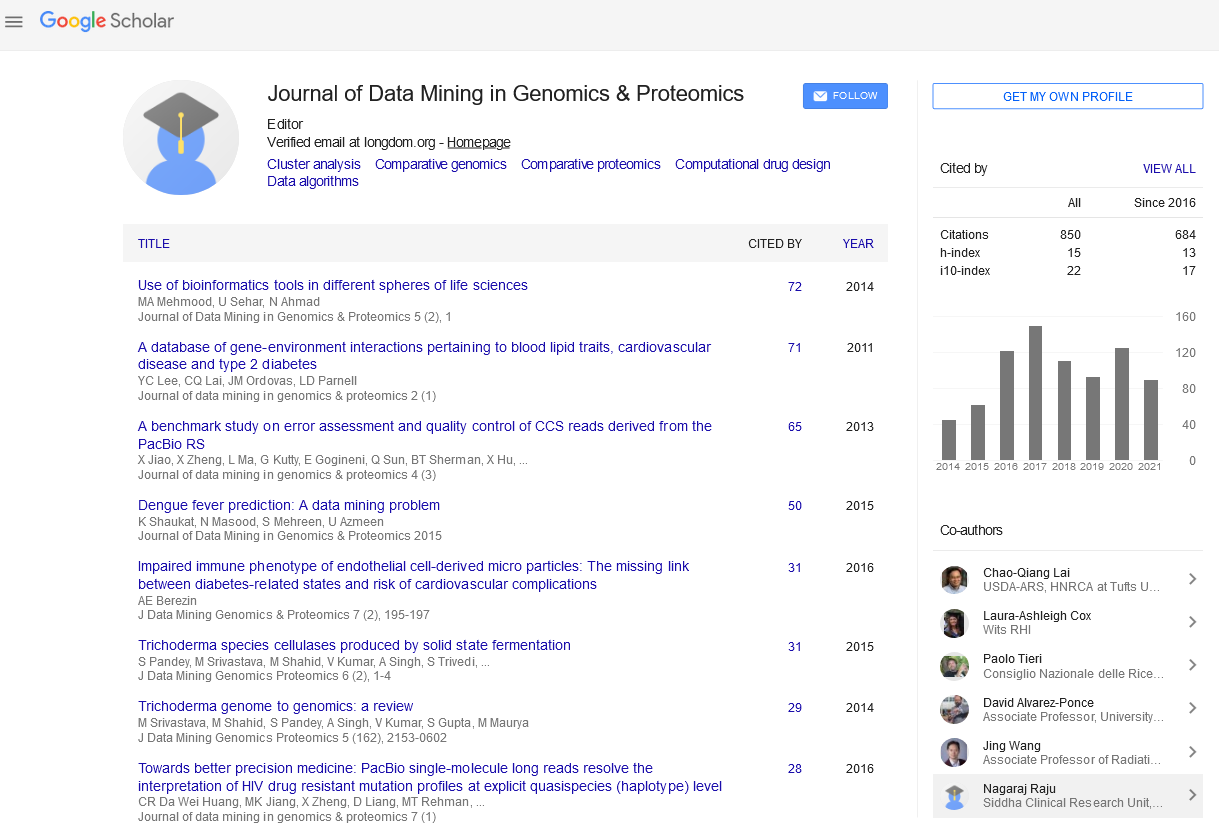PMC/PubMed Indexed Articles
Indexed In
- Academic Journals Database
- Open J Gate
- Genamics JournalSeek
- JournalTOCs
- ResearchBible
- Ulrich's Periodicals Directory
- Electronic Journals Library
- RefSeek
- Hamdard University
- EBSCO A-Z
- OCLC- WorldCat
- Scholarsteer
- SWB online catalog
- Virtual Library of Biology (vifabio)
- Publons
- MIAR
- Geneva Foundation for Medical Education and Research
- Euro Pub
- Google Scholar
Useful Links
Share This Page
Journal Flyer

Open Access Journals
- Agri and Aquaculture
- Biochemistry
- Bioinformatics & Systems Biology
- Business & Management
- Chemistry
- Clinical Sciences
- Engineering
- Food & Nutrition
- General Science
- Genetics & Molecular Biology
- Immunology & Microbiology
- Medical Sciences
- Neuroscience & Psychology
- Nursing & Health Care
- Pharmaceutical Sciences
Abstract
A Case Study on Discovery of Novel Citrus Leprosis Virus Cytoplasmic Type 2 Utilizing Small RNA Libraries by Next Generation Sequencing and Bioinformatic Analyses
Avijit Roy, Jonathan Shao, John S Hartung, William Schneider and RH Brlansky
The advent of innovative sequencing technology referred to as “Next-Generation” Sequencing (NGS), provides a new approach to identify the ‘unknown known’ and ‘unknown unknown’ viral pathogens without a priori knowledge. The genomes of plant viruses can be rapidly determined even when occurring at extremely low titers in the infected host. The method is based on massively parallel sequencing of the population of small RNA molecules 18-35 nucleotides in length produced by RNA silencing host defense. Improvements in chemistries, bioinformatic tools and advances in engineering has reduced the costs of NGS, increased its accessibility, and enabled its application in the field of plant virology. In this review, we discuss the utilization of the Illumina GA IIX platform combined with the application of molecular biology and bioinformatic tools for the discovery of a novel cytoplasmic Citrus leprosis virus (CiLV). This new virus produced symptoms typical of CiLV but was not detected with either serological or PCR-based assays for the previously described virus. The new viral genome was also present in low titer in sweet orange (Citrus sinensis), an important horticultural crop with incomplete genomic resources. This is a common situation in horticultural research and provides an example of the broader utility of this approach. In addition to the discovery of novel viruses, the sequence data may be useful for studies of viral evolution and ecology and the interactions between viral and host transcriptomes.


